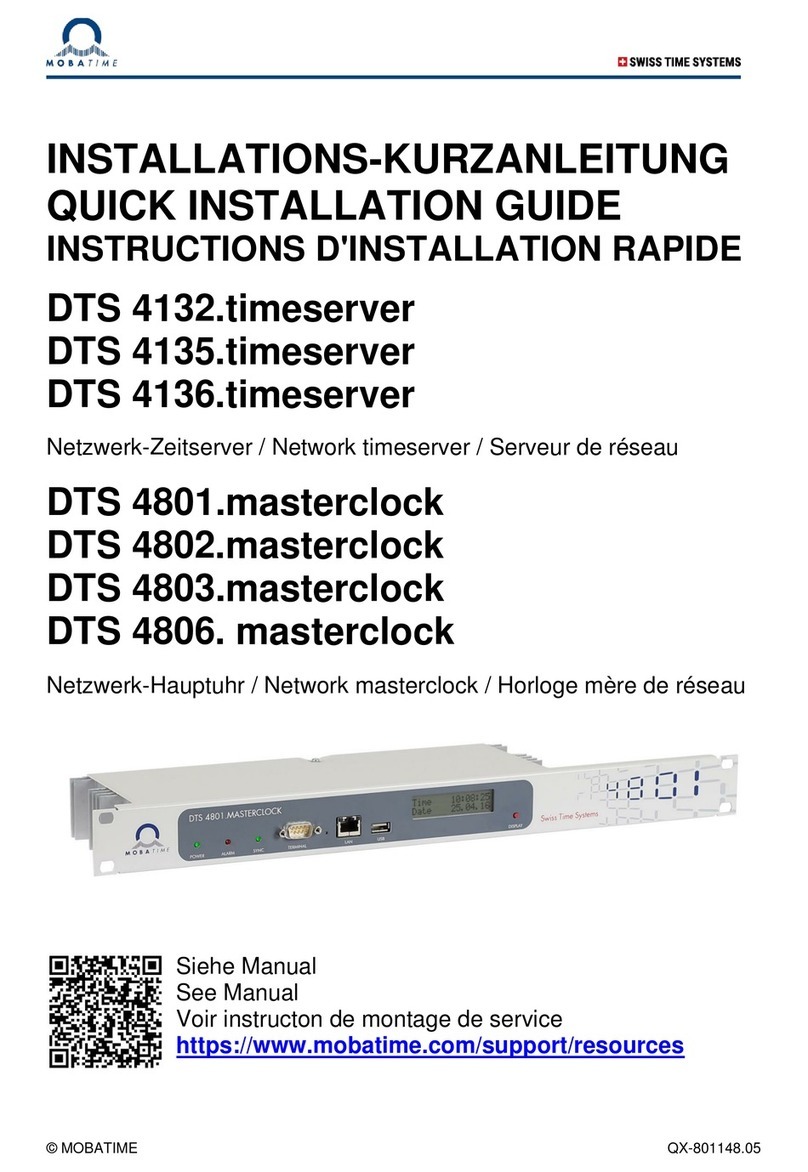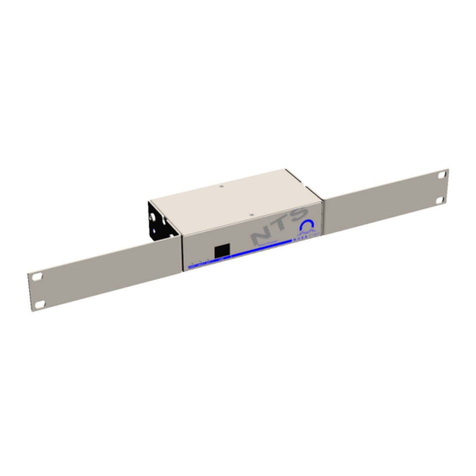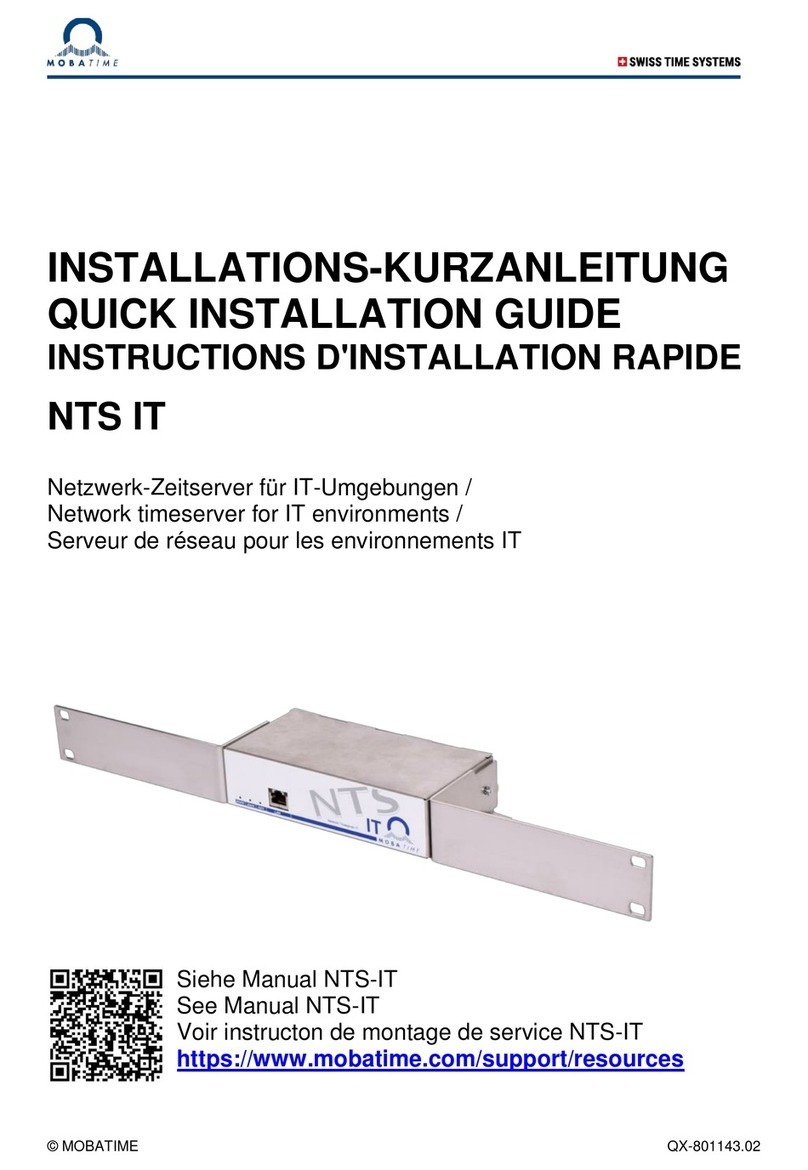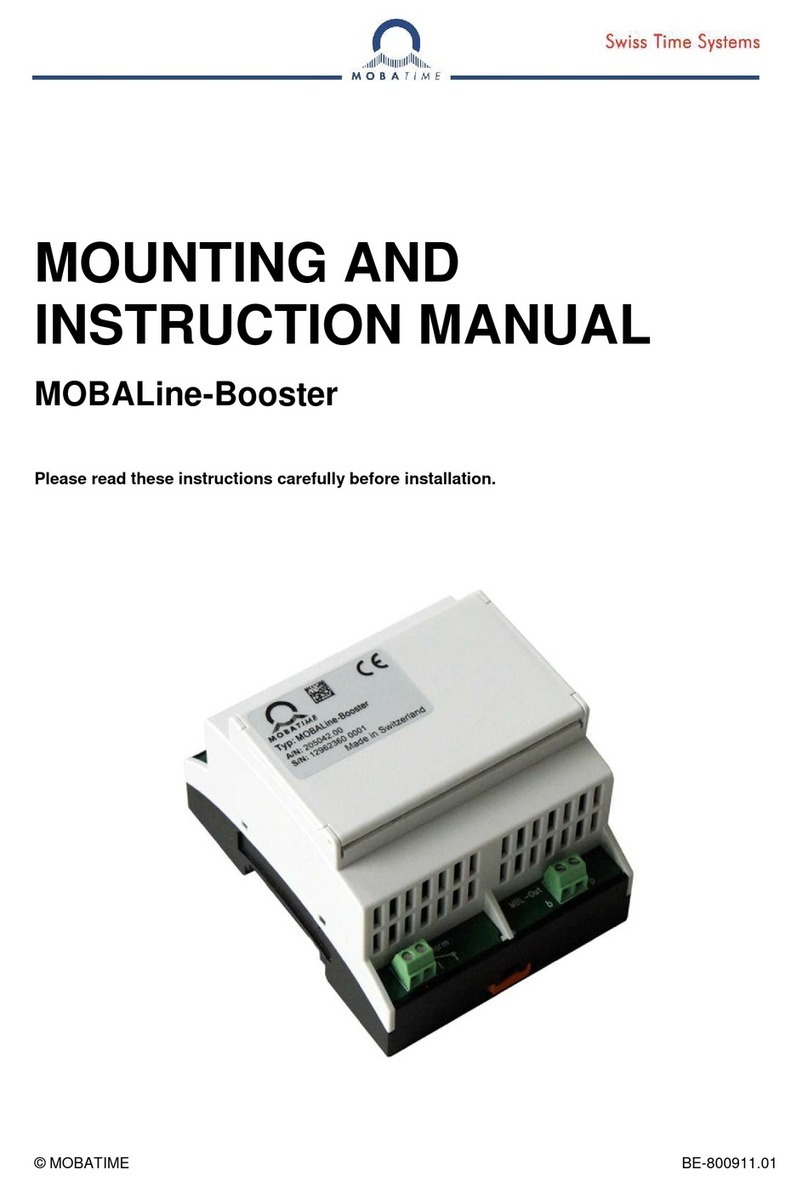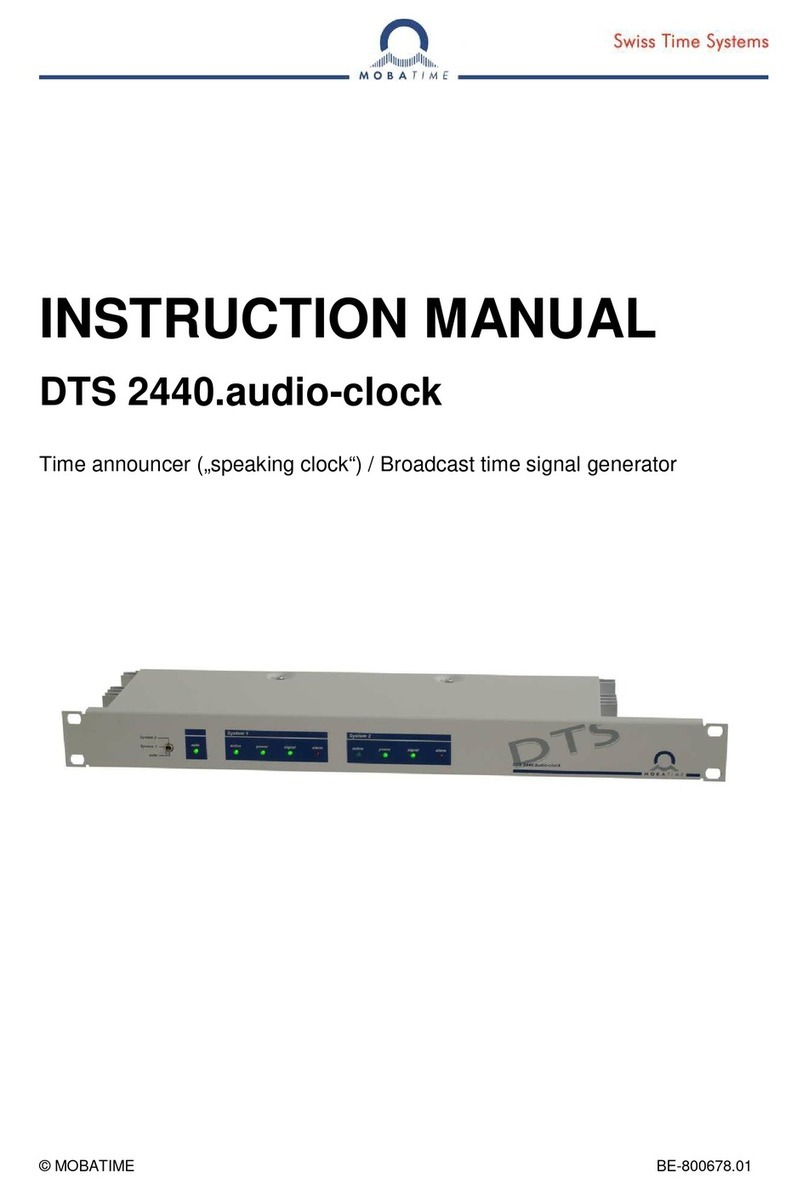
© MOBATIME 4 / 94 801299.00
Table of contents
1Safety.....................................................5
1.1 Safety instructions...............................................5
1.2 Symbols and Signal Words used in this
Instruction Manual...............................................5
1.3 Intended Use.......................................................5
1.4 Observe operating safety!...................................6
1.5 Consider the installation site! ..............................6
1.6 Please observe the electromagnetic
compatibility! .......................................................6
1.7 Network security.................................................6
2Maintenance...........................................7
2.1 Troubleshooting: Repairs....................................7
2.2 Cleaning..............................................................7
2.3 Disposing ............................................................7
3General Information: Introduction ...........8
3.1 Scope of Delivery................................................8
3.2 Technical Data....................................................8
3.3 Device Description in this Manual.......................8
3.4 Introduction .........................................................8
3.5 Device types........................................................9
3.6 DTS Distributed Time System.............................9
3.7 MOBA-NMS - Network Management System ...10
4LED displays front side.........................11
5Installation............................................12
5.1 Connections......................................................12
5.2 Chassis Ground ................................................12
5.3 Boot procedure of the DTS 4020.timebridge.....12
5.4 Initial configuration............................................12
5.5 Firmware...........................................................12
6Operation .............................................13
6.1 General .............................................................13
6.1.1 Telnet..................................................................13
6.1.2 SSH.....................................................................13
6.1.3 Menu structure ....................................................14
6.2 MOBA-NMS operation.......................................15
6.3 Main menu ........................................................16
6.4 Status menu......................................................16
6.4.1 Time status information .......................................18
6.4.2 Time source information......................................20
6.4.3 PTP information...................................................21
6.4.4 Network diagnostic..............................................22
6.5 Configuration menu...........................................23
6.5.1 Outputs................................................................24
6.5.2 Time of day – output............................................25
6.5.3 Signal output digital: Pulse / Frequency / IRIG /
10 MHz................................................................25
6.5.4 Signal output analog: IRIG / 10 MHz....................26
6.5.5 Time handling......................................................27
6.5.6 Time source ........................................................28
6.5.7 Time adjustment / Time-keeping..........................30
6.5.8 Manual time set / Leap second............................31
6.5.10 NTP.....................................................................32
6.5.13 PTP Configuration...............................................35
6.5.14 F-IN settings........................................................38
6.5.15 Alarms.................................................................38
6.5.16 Alarm relay..........................................................38
6.5.17 Alarm mask.........................................................40
6.5.18 E-mail..................................................................41
6.5.19 SNMP traps.........................................................43
6.5.20 General settings..................................................45
6.5.21 Network...............................................................46
6.5.22 IPv4 static routing................................................49
6.5.23 VLAN configuration..............................................50
6.5.24 Services (network services FTP, telnet, SSH...)...51
6.5.25 SNMP..................................................................52
6.5.26 SNMP V1 / V2c....................................................53
6.5.27 SNMP V3 ............................................................53
6.6 Maintenance menu ...........................................56
7Updates................................................58
7.1 Updating images with MOBA-NMS...................58
7.2 Updating images with FTP................................58
7.3 Updating / restore device configuration with
FTP...................................................................59
7.4 Updating images via USB.................................59
7.5 Updating / restore device configuration via
USB...................................................................60
7.6 FTP connection.................................................61
7.7 SFTP connection ..............................................61
7.8 SCP connection................................................62
7.9 Save Configuration externally...........................62
8Time administration ..............................64
8.1 Concept of time administration..........................64
8.2 Synchronization process & diagram..................64
8.3 Time acceptance...............................................66
8.4 Stratum handling...............................................66
8.5 Source change example situation.....................67
8.6 Time server.......................................................68
8.7 Time accuracy, time-keeping............................68
8.8 Leap second .....................................................69
8.8.1 Introduction to the leap second............................69
8.8.2 Leap second handling by the DTS4020:..............69
8.8.3 Leap second alert notification on DTS 4020
outputs ................................................................70
8.8.4 Leap second correction mode..............................70
8.8.5 Leap second status indication..............................70
8.9 NTP Authentication...........................................71
8.9.1 NTP symmetric keys............................................71
8.9.2 NTP Autokey.......................................................72
8.10 PTP...................................................................72
8.11 Synchronous Ethernet (SyncE).........................73
8.12 Oscillator...........................................................73
8.13 Logfile Synchronization status ..........................73
9SNMP...................................................74
9.1 General.............................................................74
9.2 Device configuration with SNMP.......................75
9.3 DTS subagent SNMP notification......................75
9.3.1Startup [dts4020StartUp].....................................75
9.3.2 Shutdown [dts4020Shutdown] .............................75
9.3.3 Status changed [dts4020StatusChanged]............76
9.3.4 Configuration changed
[dts4020ConfigChanged].....................................76
9.3.5 Alive Notification [dts4020Alive]...........................77
9.3.6 Alarm Notification [dts4020Alarm]........................77
10 Redundant Power supply......................78






